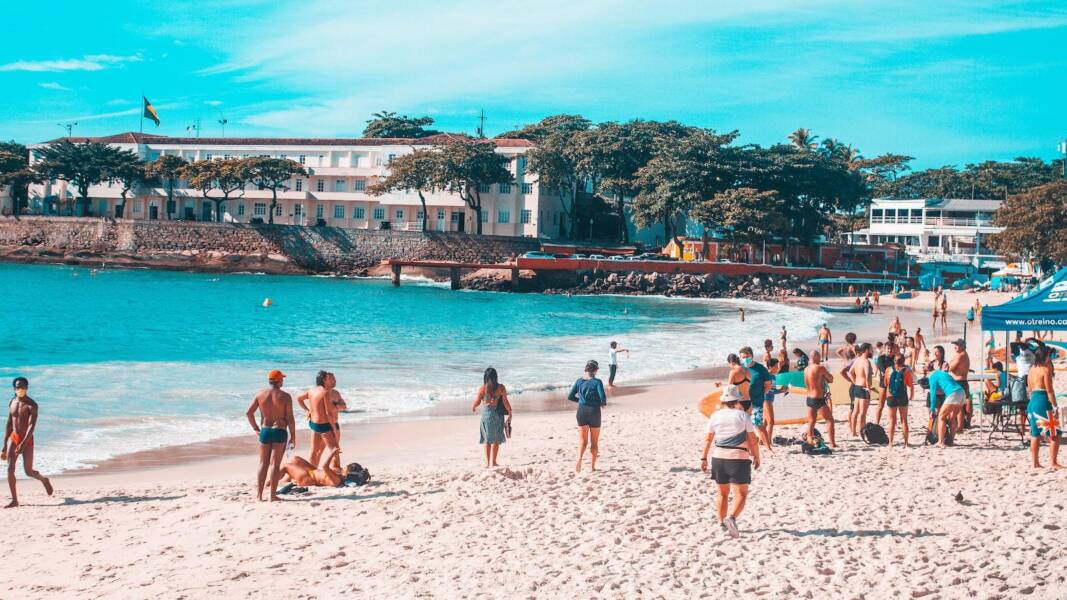Rio de Janeiro, known for its stunning beaches, vibrant culture, and iconic landmarks, is also home to a rapidly growing population density. As one of Brazil’s most populous cities, Rio de Janeiro has experienced an impressive surge in its population over the past few decades. This article will delve into the factors fueling this population growth, the benefits and challenges it presents, and provide practical tips for both residents and visitors alike.
Factors Driving Population Growth
Rio de Janeiro’s thriving population can be attributed to several key factors:
1. Economic Opportunities
The city’s booming economy, fueled by industries such as tourism, entertainment, and commerce, has attracted individuals from all over Brazil and abroad seeking job opportunities. Rio de Janeiro’s diverse economic landscape offers a range of employment options, from traditional sectors like manufacturing and finance to emerging industries like tech startups.
2. Urban Development
Urbanization has played a significant role in Rio de Janeiro’s population growth. As the city expands and improves its infrastructure, more people are attracted to the convenience and amenities that urban living provides. The construction of new housing developments, improved transportation systems, and the revitalization of neighborhoods have all contributed to the city’s increasing population density.
3. Cultural Attraction
Rio de Janeiro’s unique culture is a major draw for both locals and newcomers. From its world-famous Carnival celebrations to its vibrant music and dance scene, the city offers a rich cultural experience that appeals to people from all walks of life. Many individuals are enticed by the opportunity to immerse themselves in Rio de Janeiro’s lively atmosphere and explore its diverse heritage.
The Benefits and Challenges
The rising population in Rio de Janeiro brings both benefits and challenges to the city and its residents:
Benefits:
-
- Economic Growth: A larger population fuels economic growth, attracting more businesses and investment to the city.
-
- Cultural Exchange: A diverse population contributes to a vibrant cultural scene and fosters cross-cultural understanding.
-
- Infrastructure Development: With more people comes the need for improved infrastructure, leading to the development of better transportation systems, healthcare facilities, and educational institutions.
-
- Increased Job Opportunities: A growing population creates more job opportunities, benefiting both residents and newcomers.
Challenges:
-
- Housing Shortages: The influx of people can strain the housing market, leading to increased rent prices and a shortage of affordable housing options.
-
- Traffic Congestion: More people mean more vehicles on the road, contributing to traffic congestion and increased commuting times.
-
- Pressure on Public Services: A growing population requires additional public services, such as healthcare and education, which can be a strain on the city’s resources.
-
- Environmental Impact: The increased population can put additional pressure on Rio de Janeiro’s natural resources and ecosystem if not managed sustainably.
Practical Tips for Residents and Visitors
For residents and visitors in Rio de Janeiro, here are some practical tips to navigate the thriving population:
1. Plan Ahead for Housing
If you are planning to relocate to Rio de Janeiro or stay for an extended period, it is advisable to start your housing search early. Research different neighborhoods, consider your budget, and explore various housing options to find the best fit for your needs.
2. Opt for Sustainable Transportation
To avoid getting caught in traffic congestion, consider using sustainable modes of transportation such as walking, cycling, or utilizing the city’s public transportation system. Rio de Janeiro offers an extensive bus network and a growing metro system, providing accessible and eco-friendly travel options.
3. Engage in Community Activities
Getting involved in community activities is a great way to connect with locals and fellow expatriates. Attend neighborhood events, join local clubs or organizations, and participate in cultural exchanges to enrich your experience in Rio de Janeiro.
4. Explore Beyond Tourist Areas
While iconic landmarks like Christ the Redeemer and Copacabana Beach are must-see attractions, don’t limit yourself to tourist hotspots. Explore lesser-known neighborhoods and immerse yourself in the local culture to truly experience the diverse tapestry of Rio de Janeiro.
Case Study: Copacabana Neighborhood
| Population | Area | Features |
|---|---|---|
| Approximately 160,000 | 7.84 km² | Stunning beachfront, vibrant nightlife, an array of restaurants and shops, Rio de Janeiro’s most famous New Year’s Eve celebration. |
One of Rio de Janeiro’s most iconic neighborhoods, Copacabana, showcases the convergence of local culture and tourism. With a population of approximately 160,000 residents, Copacabana offers a diverse mix of residential and commercial spaces. Its world-renowned beach attracts tourists from around the globe, while the neighborhood’s lively nightlife and culinary scene cater to both locals and visitors alike.
Conclusion
Rio de Janeiro’s population growth is a testament to the city’s allure and economic opportunities. While it brings about both benefits and challenges, the thriving population density contributes to the cultural richness and dynamism of the city. Whether you are a resident or a visitor, understanding the factors driving this growth and implementing practical tips can help you navigate and fully enjoy all that Rio de Janeiro has to offer.
TechBusinessHQ is a platform about business insights, Tech, News, SEO, 4IR, digital transformation, AI, Blockchain, Cybersecurity, and social media for businesses.
We manage social media groups with more than 200,000 members with almost 100% engagement.








